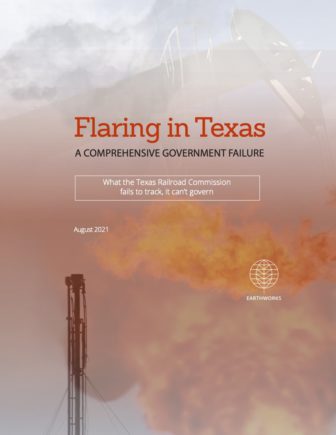
Texas Flaring: a comprehensive government failure; what the Railroad Commission fails to track, it can’t govern has forced a reaction from regulators and industry by finding that 69-84% of Texas methane flares are unpermitted.
That reaction: the unpermitted flares our analysis identifies don’t need permits. As an RRC spokesperson put it in a statement to Reuters, “a short-term observation of a flare from a flyover and absence of an explicit exception does not necessarily mean the observed flaring is illegal”.
As the lead author and researcher, I want to answer this claim.
Rule 32 governs flaring in Texas. Under Rule 32, flaring is illegal in Texas except in three cases:
- Authorized (not Permitted) Gas Releases. Authorized gas releases are a set of circumstances where the RRC acknowledges that a release of gas is necessary for the operation of the well as a matter of course. The RRC highlighted in their response to us two major sources of authorized flaring “during the first 10 producing days after initial completion and in the event of a full or partial shutdown”. Any authorized flaring must be reported to the RRC monthly. If the authorized release is related to a full or partial shut down and it lasts less than 24 hours it must be reported as soon as possible to the RRC.
- Exempt (not Permitted) Gas Releases. Exempt gas releases are a narrowly defined group of circumstances where operators can release gas (either through flaring or venting) without notifying the RRC or measuring it. In order for a release to be exempt it must be a release of gas that cannot easily be metered. Since flare stacks are generally metered most exempt releases are venting rather than flaring.
- Flare Exceptions (Permits). The exception or permitting process is used by operators who wish to flare or vent gas outside of circumstances that would be exempt or authorized. The operator makes a request to the RRC and then flares if the request is approved. This constitutes the majority of flaring, and as I explain below, almost certainly contains the flares directly observed in our analysis.
Our analysis found that 84% of directly observed flaring was not permitted. The two categories of gas release that allow for unpermitted flaring under the law are both tightly defined, and therefore unlikely to explain the high percentage of unpermitted flares we found. That’s because…
With respect to Authorized flaring, none of the wells in the analysis were under 10 days old and we used a Public Information Request to acquire the start-up shut-down gas release notifications to the RRC. Only 23 companies had ever made such a notification in the Permian Basin.
Because all Authorized flaring is required to be reported to the RRC, if the RRC wanted to explain the result of the report they could provide those reports for the sites analyzed. They have not done so.
The Exempt flaring provision of Rule 32 outlines seven scenarios where releases may occur without having to be reported to the RRC. Outside of those scenarios, releases must not be meterable to be considered exempt. Four of those scenarios are predominantly for venting rather than flaring, so they would not be pertinent to our analysis. Two scenarios are for wells that are newer than the wells observed. That just leaves one scenario that may explain some of the flaring observed: the release of tank vapors. However Rule 32 does not obligate operators to flare that gas, so it is unlikely that it makes up any significant portion of the flaring we observe, especially since, in order for a release to be exempt, it must not be meterable and most flare stacks are metered. Moreover, from on the ground observations, thief hatch venting (which does not require flaring) is among the preferred methods to release tank vapors.
The Exempt flaring provision of Rule 32 is explicit that it is intended to exempt releases of gas that cannot be metered, meaning that the RRC has no way to know how much gas is actually being released.
It’s easy to see why operators would use these grey flaring areas to hide from the results of the report, but I was surprised to see the RRC itself using this defense.
Even if you take the RRC response at face value that every flare we observed was Exempt, that would mean that the RRC is admitting that its own flaring data that it uses to inform its policy decisions is missing as much as 84% of the flaring in the state. This is important because many of the responses to the report, including from the Texas independent Producers and Royalty Owners Association, have touted RRC data showing that flaring is on the decline in order to answer our report.
Moreover, when the RRC formed a Blue Ribbon Committee to address flaring in Texas, they exclusively focused on permitted flaring not exempt or authorized flaring. If 84% of flaring is (as the RRC claims) exempt or authorized then was the Blue Ribbon Committee ever truly intended to have an impact on Texas flaring? Either the Committee was a sham that never had a chance to have a material impact on flaring, or the RRC is overemphasizing the prevalence of exempt and authorized flaring in response to our analysis.
This doesn’t seem like a winning argument to me.

